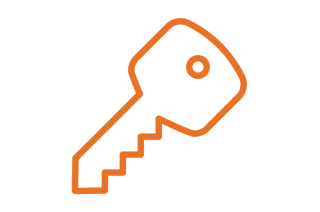Fighting Stroke Together:
Reducing risk and recognising the signs of stroke
Original article from COTA NSW
Sign up to their newsletter today, click here – https://www.cotansw.com.au/#subscribe
In Australia, Stroke is one of the biggest killers. According to the AIHW, it kills more women than breast cancer and more men than prostate cancer [1]. In addition, suffering a stroke is more common in older age groups with over 2 in 3 (71%) people who had a stroke were aged 65 and over [2]. However, the Stroke Foundation states that 80% of strokes can be prevented [3]. Therefore, it is important that we review what Stroke is, how we can prevent it and what the signs are so can fight it together.
What is a stroke?
Our brains are fed by blood carrying oxygen and nutrients through our arteries. A stroke happens when blood cannot get to the brain. This could be due to a blood vessel/ artery becoming either suddenly blocked (ischaemic stroke) or it bursting and beginning to bleed (haemorrhagic stroke). As a result, brain cells die due to a lack of oxygen and nutrients which then leads to impairment, affecting a range of activities such as speaking, thinking, movement and communication. Unfortunately, a stroke is often fatal.
As stated earlier, 80% of strokes are preventable. Therefore, managing your stroke risk and living a healthy lifestyle is very important in helping to prevent you from suffering a stroke.
Know Your Risk Factors
Start by understanding your personal risk factors. Age, family history, and ethnicity are non-modifiable risk factors.
However, there are several modifiable risk factors that you can actively address. These include:
- High blood pressure
- High cholesterol
- Diabetes
- Smoking
- Excessive alcohol consumption
- Obesity
- Physical inactivity
Control Hypertension (High Blood Pressure):
High blood pressure is the leading cause of haemorrhagic strokes. Regularly monitor your blood pressure and work with your healthcare provider to keep it within a healthy range. Lifestyle changes, such as adopting a low-sodium diet, regular exercise, stress reduction techniques, and medication when necessary, can help manage hypertension effectively.
Embrace a Heart-Healthy Diet:
A diet that promotes heart health can significantly reduce the risk. Incorporate plenty of fruits, vegetables, whole grains, lean proteins, and healthy fats into your meals. Limit your intake of saturated and trans fats, as well as processed and high-sugar foods.
Stay Active:
Regular physical activity not only helps with weight management but also improves cardiovascular health. Aim for at least 30 minutes of moderate-intensity aerobic exercise most (preferably all) days of the week. Engaging in activities like brisk walking, cycling, swimming, or dancing can make staying active enjoyable and sustainable. Click here to access COTA NSW active ageing videos with exercises.
Quit Smoking:
Smoking is a significant risk factor for stroke. If you smoke, seek support and resources to quit. Quitting smoking not only reduces your risk but also improves overall health and well-being.
Limit Alcohol Consumption:
Excessive alcohol intake can raise blood pressure and contribute to other stroke risk factors. If you drink alcohol, do so in moderation. The Australian Guidelines say that to reduce the harm from alcohol related disease or injury healthy men and women should have no more than 10 standard drinks a week and no more than 4 standard drinks on any one day.
Manage Diabetes:
If you have diabetes, it’s essential to manage it effectively. Keep blood sugar levels within the target range through a combination of a balanced diet, regular exercise, and proper medication as prescribed by your healthcare provider.
Regular Health Checkups:
Schedule regular checkups with your healthcare provider to monitor your blood pressure, cholesterol levels, and overall health. Detecting and addressing any health concerns early can significantly reduce stroke risk. Speak with your healthcare provider to assess your risk profile and discuss appropriate preventive strategies.
Recognising the Signs
The Australian Stroke Foundation has created the FAST test as an easy way to recognise and remember the signs of a stroke [4].
Using the FAST test involves asking these simple questions:
- Face: Check their face. Has their mouth drooped?
- Arms: Can they lift both arms?
- Speech: Is their speech slurred? Do they understand you?
- Time: Time is critical. If you see any of these signs, call 000 straight away.
Preventing strokes is within our grasp. By understanding and addressing our risk factors, adopting a heart-healthy lifestyle, and seeking appropriate medical guidance, we can significantly lower our chances of experiencing a stroke. National Stroke Week is 7th – 13th August, consider using this week to take charge of your health and to make sure that you are able to recognise and remember the signs, so we can work together to fight stroke.
Interested in similar articles? Why not check these out:
Diabetes – what you need to know
References:
[1] Australian Institute of Health and Welfare (2018) Australia’s health 2018. Australia’s health series no. 16. AUS 221,AIHW, Australian Government
[2] Australian Institute of Health and Welfare (2023) Heart, stroke and vascular disease: Australian facts, AIHW, Australian Government
[3] and [4] Stroke Foundation: https://strokefoundation.org.au











